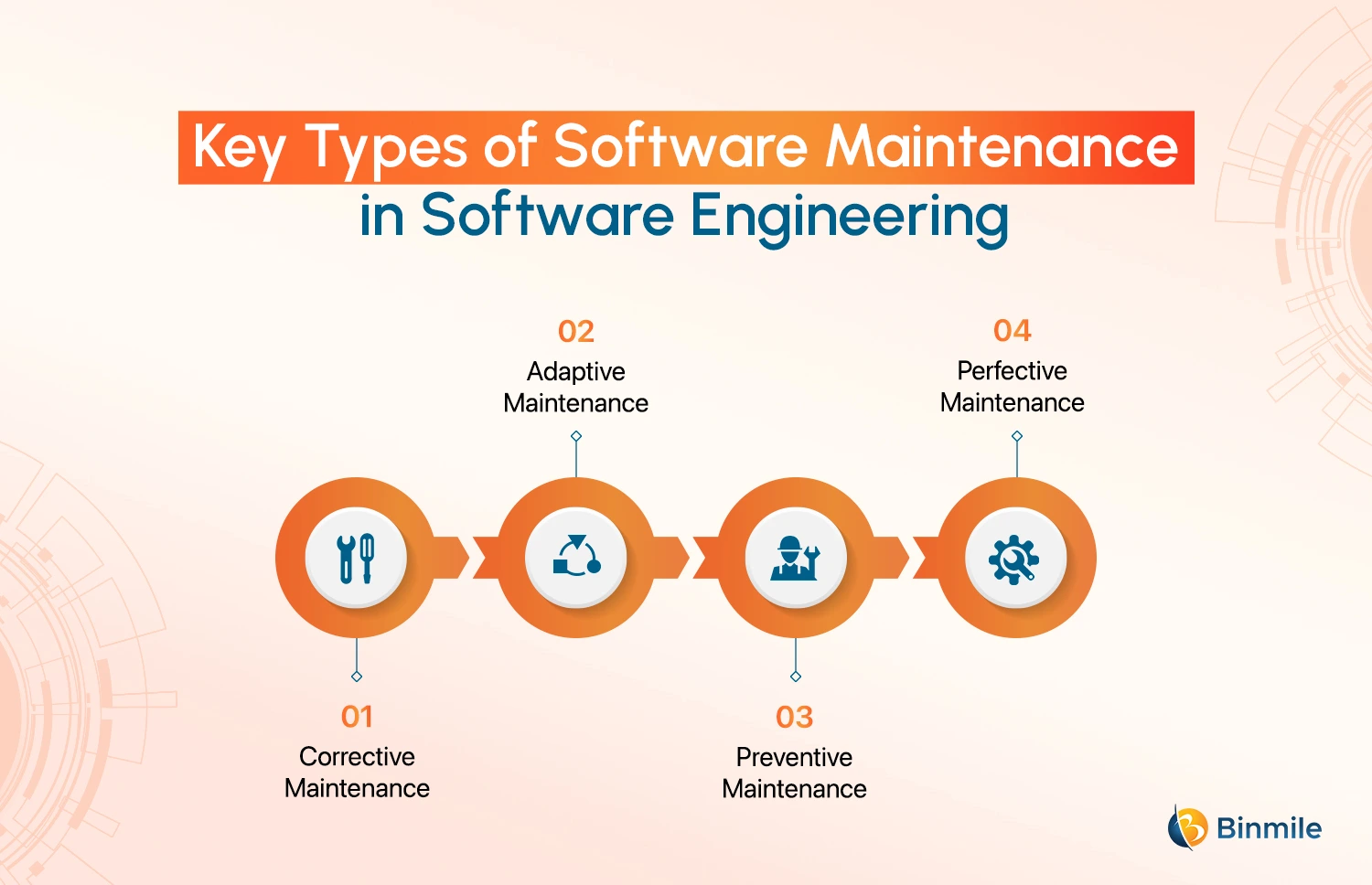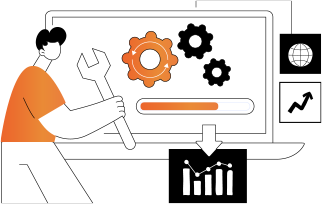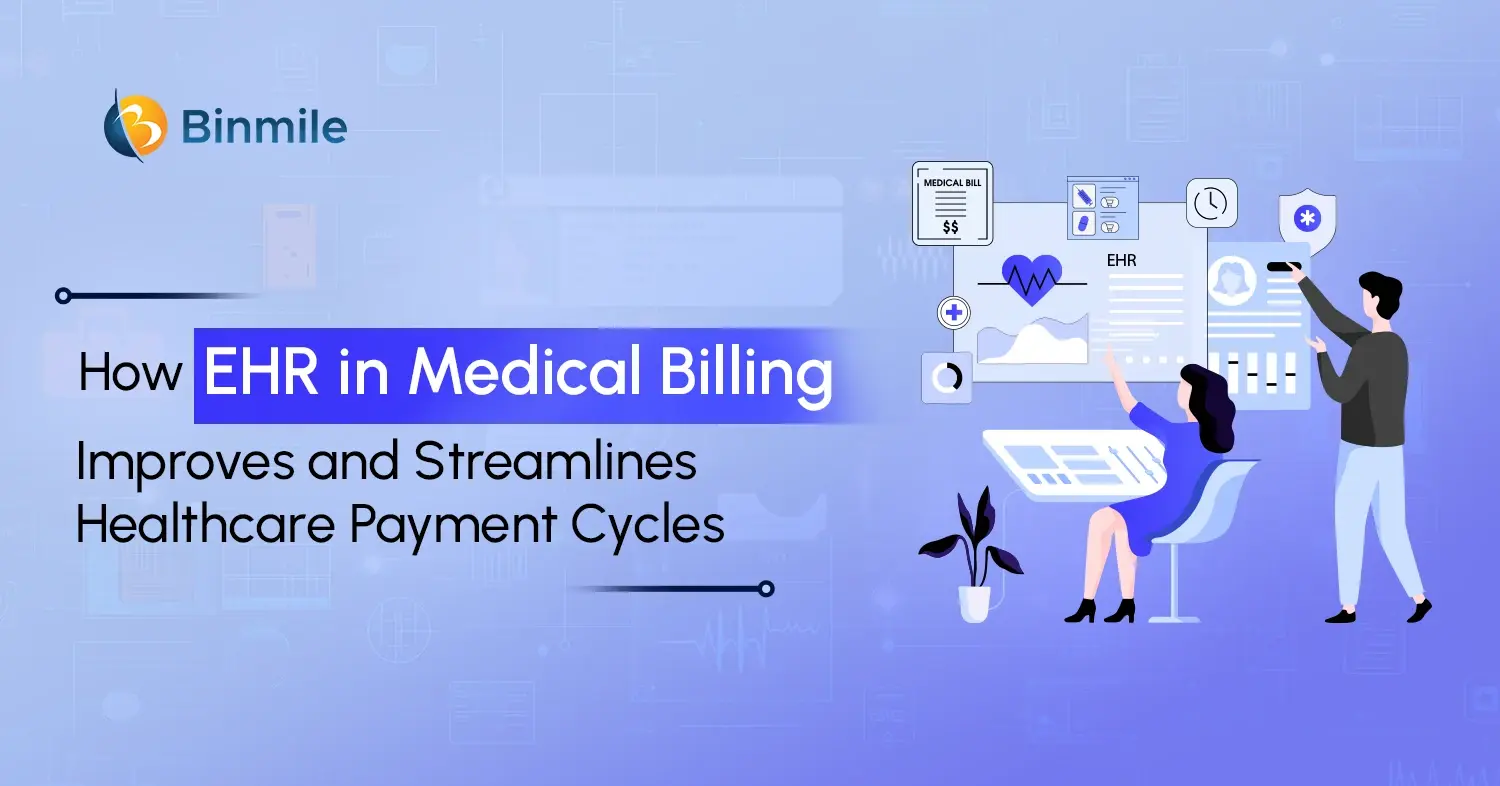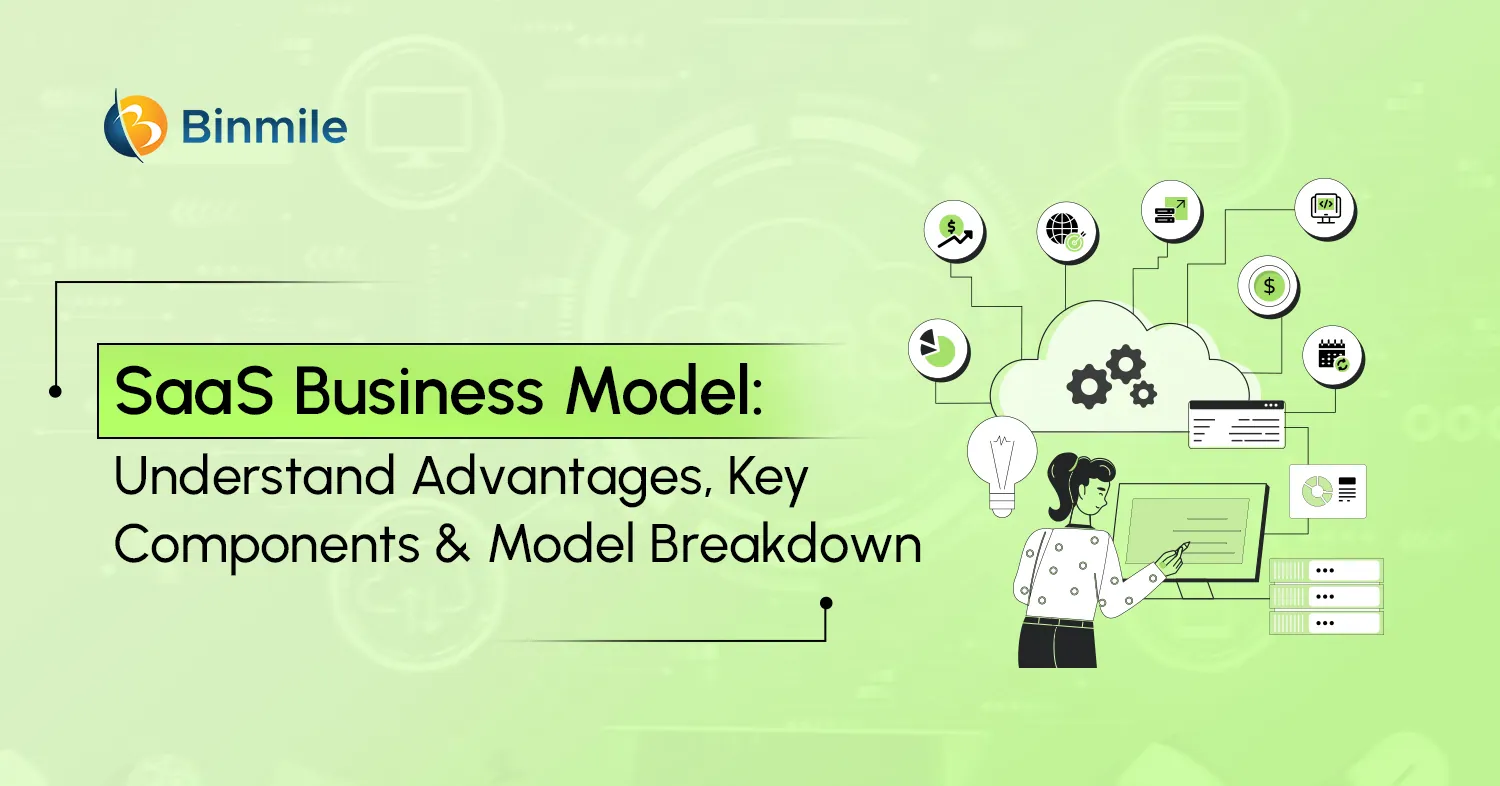- categories of software maintenance
- cost of software maintenance
- phases of software maintenance life cycle
- role of maintenance in SDLC
- role of software maintenance
- significance of software maintenance for business
- software maintenance
- software maintenance and support process
- software maintenance guide
- software maintenance in software engineering
- software maintenance models
- software maintenance process
- software maintenance services
- what is software maintenance?
- What is the cost of Software Maintenance?
- why software maintenance is important
Software is integral to business operations in this increasingly digitalized world, enabling them to stay agile, deliver services effortlessly, and provide personalized customer experiences. However, simply developing and successfully launching software is insufficient to ensure sustainable business success. Continuous maintenance is crucial to remain competitive, meet evolving user expectations, and for optimal performance. What is the software maintenance process? Software maintenance service refers to changing, modifying, and updating software to prevent issues, enhance functionality or performance, and keep it up and running. It serves as the backbone for extending the utility and efficiency of software well beyond its initial launch.
Moreover, software maintenance management not only helps companies extend the utility and performance of software post-launch but also helps them risk declining performance, security vulnerabilities, loss of competitive edge, and obsolescence. Without effective software maintenance practices or an in-depth understanding of its methodologies, businesses risk facing challenges such as declining performance, security vulnerabilities, loss of competitiveness, and eventual obsolescence. To address these critical concerns, this blog will discuss the software maintenance plan, its importance, type of software maintenance, models, and strategies for effective software maintenance and support.
Software Maintenance – What is It & Why It Matters?
According to Gartner, Software maintenance service refers to “Updating software, adding new functions, fixing bugs, and solving problems.” This means that software maintenance management is a process that helps businesses upgrade, modify, and update software to meet client needs and the evolving user’s expectations. Thus not just improving the software overall by addressing faults or bugs but also increasing performance, viability, and more.
Why is Software Maintenance Important?
It is a crucial part of the software development cycle and helps developers in:
- Lowering the long-term total cost of ownership with tech debt reduction practices, feature enhancement, and bug fixes to keep software stable, efficient, and modern.
- Meeting the changing user requirements and hardware/software requirements accordingly with time.
- Ensuring the viability and relevancy of the software from its inception through deployment and ongoing usage.
- Reducing unwanted side effects and ensuring the system continues satisfying user requirements.
- Extend the lifespan and enhance the efficiency of software systems throughout a software product’s lifecycle.
Exploring the Key Software Maintenance Models – An Overview
Software maintenance and support models are different methods to modify or upgrade your software. However, the process may depend on your business goals, industry, tech team’s expertise, and the market’s predictive trends. So, choose the right model from the following options:

- Quick-Fix Model: This model works to resolve software problems immediately, without thinking about effects over time. Developers use it to solve critical problems while looking for faster ways to work.
- Iterative Enhancement Model: The model gradually improves the software through several steps. Each round involves making plans, building software, implementing it, and testing it to improve the software piece by piece.
- Boehm’s Model: This method has two names: the Spiral Model and Boehm’s model. It evaluates software quality through sequential levels: high-level traits (Maintainability, Portability, As-is utility), intermediate factors (Reliability, Efficiency, Testability, Understandability, Usability), and primitive features (device independence, accessibility, accuracy). This allows developers to adjust plans and go through steps more than once.
- Reuse-Oriented Model: This model shows how older software parts identify reusable components in existing systems to reduce planned project expenses and completion time. It also shows how to find parts of earlier software that still work and can be used again, adding them to the current project without system alterations.
Phases of Software Maintenance Life Cycle
Software maintenance management has different stages, just like software development phases. So, to help you better understand the software maintenance and support process, here’s the framework of the cycle:
1. Problem Identification
The tech team finds software update requests from users and gives each one a unique ID. Following the classification, Developers rank each requested change to know what needed work before starting on others.
2. Problem Analysis
In this phase, programmers determine all the software changes they need based on five critical parts: validated requested changes, cost estimates, details about the programming code, and required documents.
3. Design
Developers start writing new program parts to replace or adjust parts of the code. They create test scenarios to ensure the system is running safely and protected from any vulnerabilities. It includes the following:
- The way we describe software blocks of code must follow standard guidelines.
- Changing the previous list of changes
- Writing test plans for fresh product designs
- Building regression tests
4. Implementation
The SDLC team updates computer programming, adds design notes and new features, and adjusts the entire program. The inputs are based on software source code, change software, and project paperwork to make the required modifications.
5. System Test
This checks how the adjusted, added, or modified changes interact with the system to ensure that it remains bug-free after the changes as the software runs. Testers also put together test review reports and updated software guides.
6. Acceptance Test
This phase tests the fully integrated system to verify that the new features meet the requirements stated in the modification request. The input attribute includes acceptance test plans, cases, procedures, and a fully integrated system.
7. Delivery Phase
The team delivers updated software to the end user with exhaustive documentation, including manuals and help files, that describe how the modified, updated, or removed changes will impact the software’s operation and hardware specifications.
Leverage our expert software development services to build secure, high-performing applications that scale with your growth and enhance operational efficiency.

Uncovering the Types of Software Maintenance for Optimal Performance
There are four commonly known types of software maintenance services:

- Corrective Maintenance: It aims to correct any remaining errors, such as poor database design, bugs, viruses, security vulnerabilities, etc. This type of software maintenance addresses errors and faults that could impact various parts of your software.
- Adaptive Maintenance: Modifies the software to match changes in the ever-changing environment. This is done to help companies ensure that the software keeps up with expected or unexpected changes and continues functioning correctly.
- Preventive Maintenance: prevents the system from becoming obsolete and involves the concepts of reengineering and reverse engineering. In this process, an old system with old technology is re-engineered using new technology. This type of software maintenance prevents the system from dying out and improves its scalability and reliability in the future.
- Perfective Maintenance: It ensures your software meets your users’ or systems’ evolving requirements and features and keeps it relevant as the market and user needs change. This may include removing or adding system functionality, improving speed optimization, computational efficiency, etc.
What is Software Maintenance Service Cost?
Maintaining a product is generally estimated to cost more than 90% of the software’s total cost. The cost of software maintenance and support is the same as software development costs, which depend on many factors and have no fixed figure. Factors such as software type, the number of users, and the required activities may affect monthly maintenance costs, varying from $5,000 to $50,000+ or more.
However, fret not; we are discussing some tips to help you reduce your overall software maintenance plan cost. A streamlined and organized process will automatically charge less money and effort. So, let’s dive into best practices for software maintenance management.
7 Proven Steps to Enhance Software Reliability – A Complete Software Maintenance Guide
Without following proper steps, your Software maintenance management can fail. So, let’s discuss a few tips you should keep in mind before you start the process, and this will ensure that your digital products offer longevity, reliability, and efficiency. Here are a few best practices to enhance the software maintenance plan:

1. Conduct Proactive Monitoring
This approach to continuously monitoring your software applications identifies performance bottlenecks, detects bugs, and anticipates potential issues. It allows for timely intervention, maintaining optimal performance and reliability. Doing so helps you track system health and resolve problems before an application crashes or performance degradation sets in to minimize downtime and disruptions.
2. Establish Comprehensive Documentation
Maintain detailed and up-to-date documentation covering the software’s architecture, codebase, features, and update history. This critical resource helps different stakeholder groups get on the same page and share a common understanding of expected results. Additionally, it is beneficial for troubleshooting, implementing changes, and guiding onboarding team members, saving time and effort during the maintenance process.
3. Schedule Regular Updates
When you have an established procedure for regular updates, it lets you introduce new and improved functionality while addressing existing issues, such as bugs and crashes. Thus, a well-defined update schedule extends the software’s lifespan and helps keep it competitive and aligned with user needs. Therefore, plan and execute updates systematically to fix bugs, enhance functionality, and ensure compatibility with evolving technologies.
4. Conduct Periodic Security Audits
This comprehensive assessment of your custom software application services measures the system’s security against an audit checklist of industry best practices, pre-established standards, and/or federal regulations. So, when you perform regular security assessments, you identify and mitigate vulnerabilities, build trust, and ensure compliance with industry requirements with credible and reliable software.
5. Prioritize User Feedback
Focusing on and incorporating user feedback can help SDLC teams gain insights into real-world usage scenarios and make informed decisions about their maintenance strategy. Gathering and systematically analyzing user feedback data lets you identify trends, recurring themes, and patterns. These user inputs ensure the software can be refined and optimized, meet users’ expectations, and deliver a superior experience.
6. Embrace Agile Maintenance
SDLC teams can also implement agile methodologies (which respond quickly to changes in the facility, focusing on the evolving needs of the process and the customer) in the software maintenance plan. Therefore, it allows for iterative development, regular feedback, and faster issue resolution; thus, this approach improves flexibility, enabling teams to address user demands and adapt to technological changes effectively.
7. Optimize Maintenance Processes
From data-driven insights to predictive maintenance solutions, automation transforms how organizations optimize asset performance and ensure operational efficiency. Therefore, streamline your maintenance workflows using automated tools, establishing clear protocols, and fostering collaboration across teams. Efficient processes reduce downtime, improve response times, and enhance the overall effectiveness of maintenance efforts.
Future-proof your business with expert software maintenance and experience seamless and uninterrupted growth!

Summing It Up
The significance of having highly functional and viable software for businesses cannot be understated. Therefore, organizations must emphasize software maintenance and support equally, as it is an essential part of the SDLC cycle, just like other key stages of planning, design, coding, testing, and deployment. After all, software maintenance management ensures that your digital product meets user needs and performs optimally over time. Despite the challenges and costs associated with maintenance, it offers several benefits, such as improved software quality, enhanced security, and extended software life. Therefore, it is indispensable for sustainable software development.
Hopefully, this blog has given you the required understanding of the nitty-gritty of software maintenance plans, their benefits, types, and models. In addition, the best practices for Software maintenance management will help you stay on track and have an effective process without breaking the bank! If the process seems complex or difficult to implement, seek software product development services to boost operations and drive the best customer experience. These companies specialize in streamlining the maintenance process and will be your partner throughout the SDLC so you can focus on core activities while they manage complex tasks.
So, do not let software issues slow you down.
Still, got questions on software maintenance costs or want to discuss your project idea with us? Contact us and get a free consultation today!
Frequently Asked Questions
Software maintenance services, a critical aspect of Managed Software Services, involve the ongoing support, management, and upkeep of software applications after their initial development and deployment. These services ensure that software remains functional, secure, and up-to-date throughout its lifecycle.
Outsourcing software maintenance services offer several benefits to organizations, including:
- Cost savings: Outsourcing maintenance services can be more cost-effective than maintaining an in-house team, especially for small and medium-sized businesses.
- Access to expertise: Outsourcing providers often have specialized skills, knowledge, and experience in software maintenance, ensuring high-quality service delivery.
- Focus on core activities: Outsourcing maintenance tasks allows organizations to focus their internal resources and efforts on core business activities and strategic initiatives.
- Scalability and flexibility: Outsourcing providers can scale their services up or down based on the organization’s changing needs and requirements, providing flexibility and agility.
Software maintenance in software engineering refers to the process of modifying, updating, and enhancing software after it has been delivered to the end-user. It encompasses all activities aimed at keeping the software operational, reliable, and up-to-date throughout its lifecycle.









